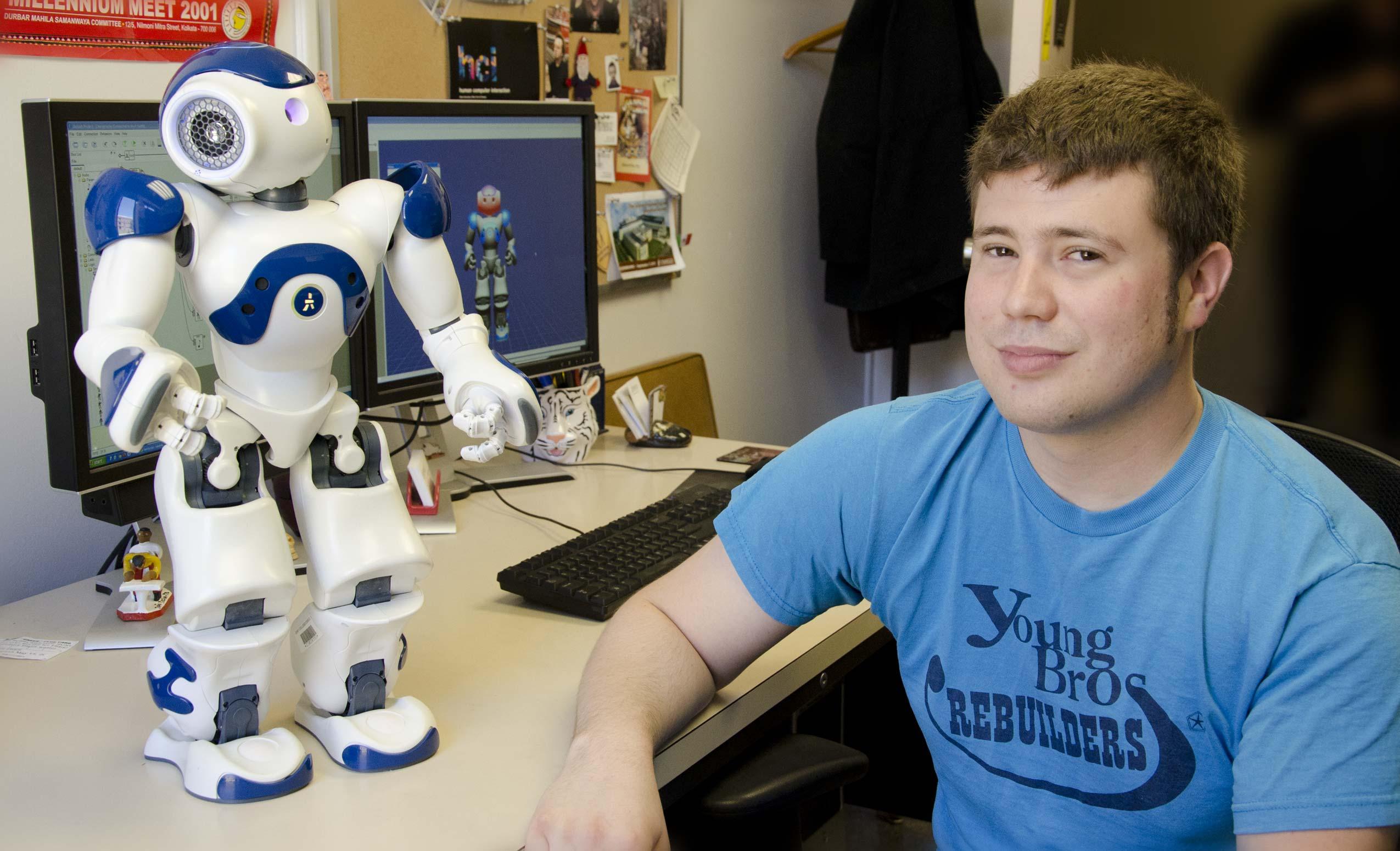Robots as a learning tool
When Dan Young pushes a button on top of the robot’s head, Michael Jackson’s “Thriller” starts to play. The robot, which looks more like a superhero toy than an elaborate piece of robotic equipment, starts to dance along with the music, with choreography that matches the dancers from the music video.
“We’re testing whether or not robots can be an effective channel of healthcare messages, which is an important part of behavioral medicine," Young said. "It's great to be working with the faculty here at Oswego on these projects.”
Young is a graduate student in the human-computer interaction and integrated health systems programs at SUNY Oswego. The dancing robot is the focus of his project for the summer.
The robot does more than entertain to 80s music; Young will use the NAO robot to see if it can change the way children learn and retain health information.
“We’re testing whether or not robots can be an effective channel of healthcare messages, which is an important part of behavioral medicine. It's great to be working with the faculty here at Oswego on these projects.”
Young is working alongside HCI director Damian Schofield and Center for Communication and Information Technology Director David Vampola. They hope to determine if children will retain more health information if they have an enjoyable experience with the robot, compared to being scared by a doctor or school nurse.
Applications in health communications
The project has potential to change the health communications industry, as the problem of how to get people to change their behavior and receive information has been present in literature for the past 30 years, Vampola said.
“There is a high-tech twist to this,” he said. “We’re building upon these foundations as problems that already exist in behavioral medicine.”
Young was surprised his project proposal had so much potential.
“It’s kind of overwhelming, hard to believe really, that working so hard can pay off in society and benefit other people,” he said.
Both Vampola and Schofield see the potential the project has for the HCI department.
“Our ultimate aim is to apply for larger funding in order to fund more student work in the area,” Schofield said. “There’s potential for international projects in this field.”
“This is a pilot study which we hope provides the seeds for larger studies,” Vampola said.
Young was in Vampola’s "Introduction to Biomedical Science" course when Vampola suggested incorporating the robots and health information technology to the class as a possible project. He partnered with another student, Julia Kester, to draft an idea similar to Vampola’s.
Addressing needs
“What Dan and Julia did was identify a specific population and what needed to be done and what had been done,” Vampola said. “They really came up with the entire project themselves.”
“The crucial thing is this is a funded project that stems from student works,” Schofield said. “We discussed the idea but Dan and Julia were the ones who researched this and looked up all the information.”
Young is the only student working on the project for the summer, even delaying his graduation to August to see the project come to fruition.
Right now, Young is researching similar studies. He will write all the materials the project will need, such as questionnaires, scripts and method development pieces and hopes to start the experiment on SUNY Oswego’s campus in July.
Continuing research
“If the pilot goes well, we can move it to Upstate [Medical Center], and carry it onto the fall with a new graduate assistantship position,” he said. “Another graduate student can work on the rest of it.”
Young finished his undergraduate degree in 2008 at SUNY Oswego with a dual major in psychology and information science. He began pursuing his master’s degree in spring 2011, after visiting Vampola and Schofield and seeing the robots for the first time.
Since his initial visit, Young worked on multiple projects involving the NAO robots, including programming them to perform robot theatre and an emotion recognition study to see what can foster an emotional connection to the robot.
In the future, he hopes to pursue his Ph.D. and continue to work in the IT field.
Vampola and Schofield credit students like Young with the different projects the department was able to offer.
“People like Dan bring these projects about. It takes somebody with creativity and intelligence to do this,” Vampola said.
“We are able to offer interesting projects to students because they’re so motivated,” Schofield said. “We wouldn’t have all this success if it weren’t for Dan and students like him.”




